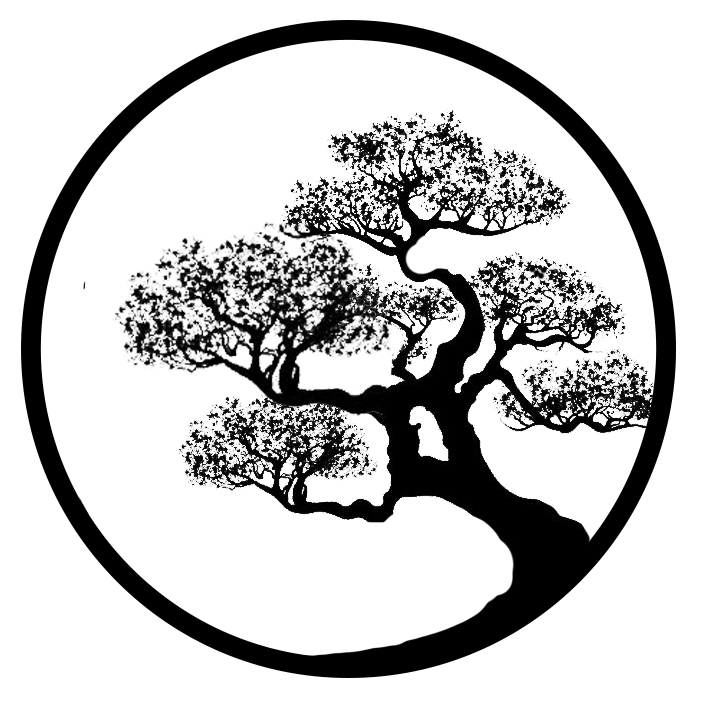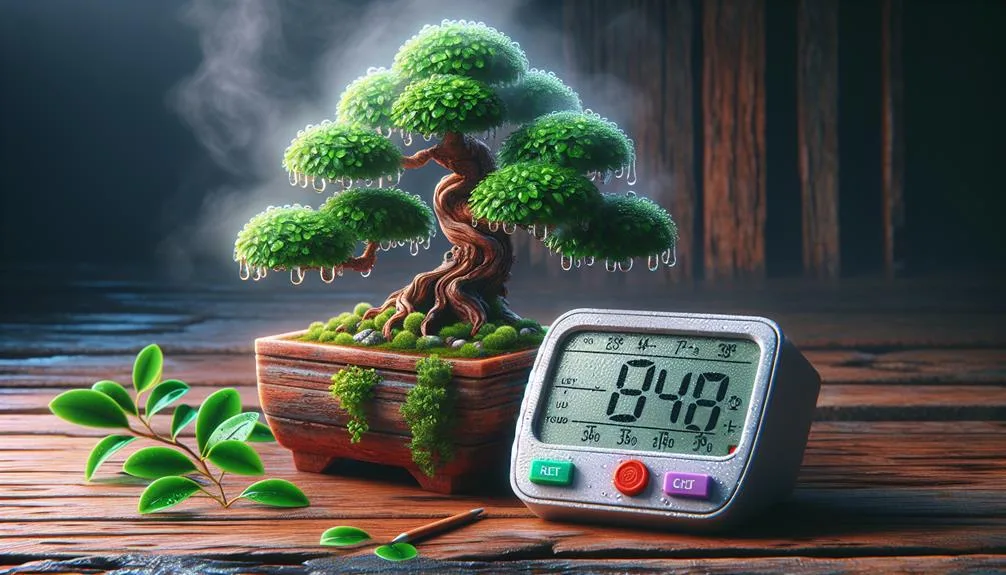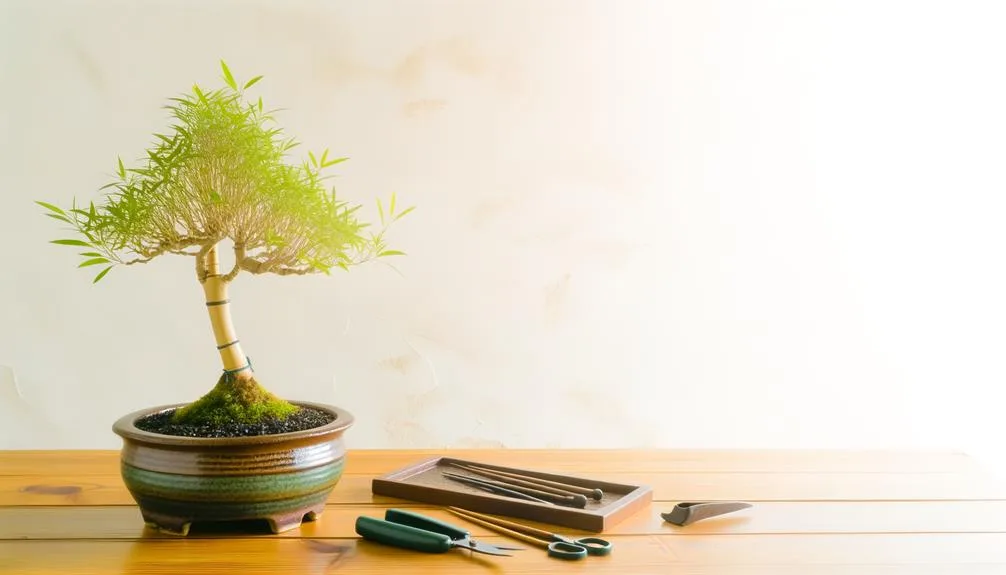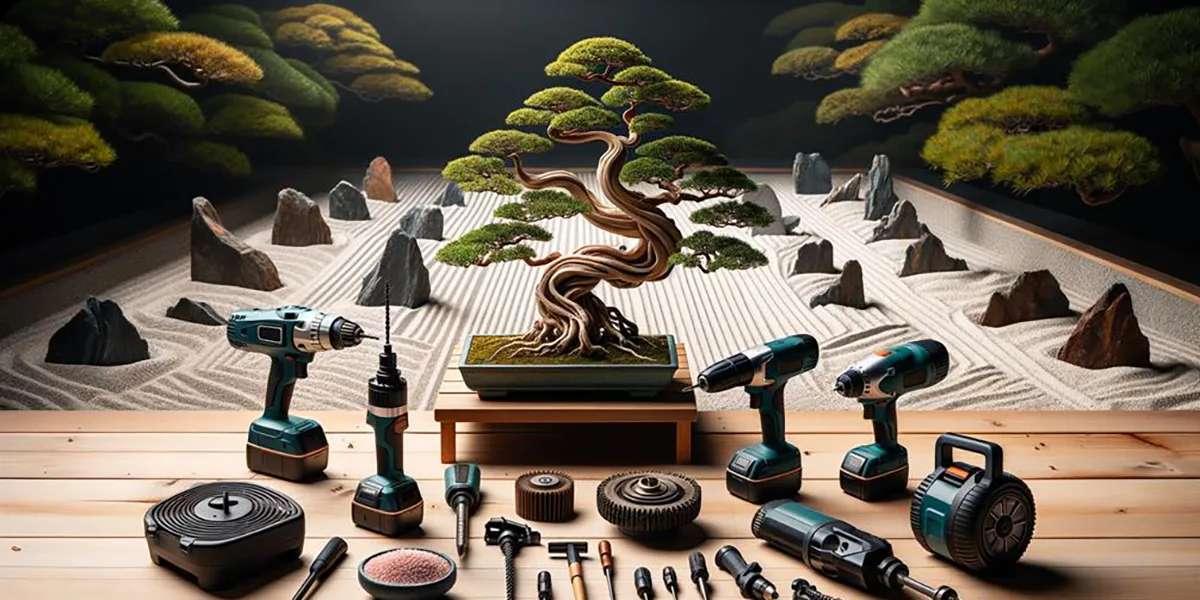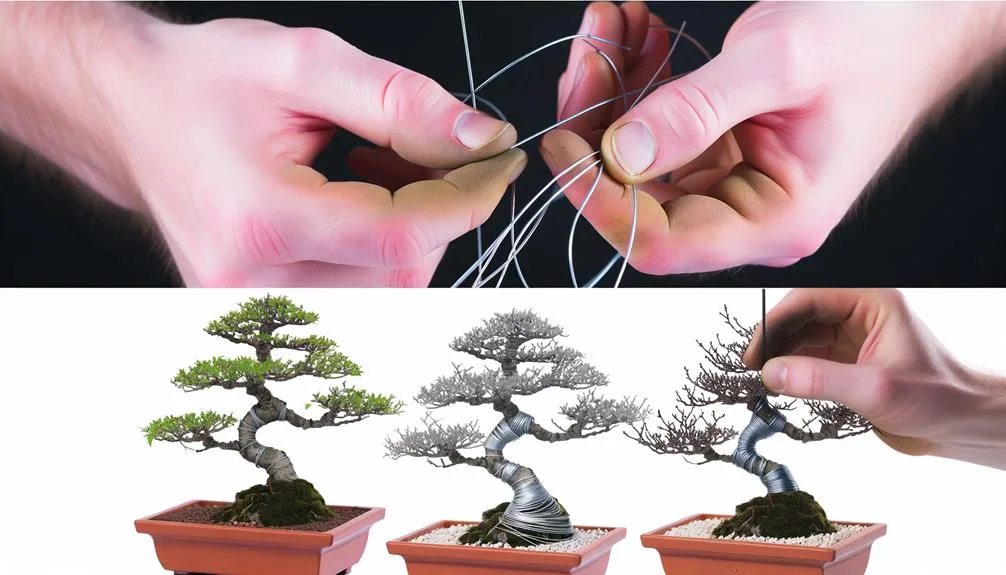The role of humidity in bonsai health cannot be overlooked when caring for and cultivating these plants. In my journey through the complex universe of bonsai cultivation, I’ve found that many factors interplay to determine the health and aesthetic appeal of these small wonders. Among these, one environmental factor that often slips under the radar is humidity.
The role that humidity plays in the health of a bonsai tree is vital, but not always completely grasped. I’ve learned how this subtle, ever-present factor can either boost or obstruct the growth of my bonsai.
As such, my goal here is to enlighten you on the effects of humidity on bonsai health, offering a basis for sound bonsai care techniques. By the conclusion, you’ll be armed with the insight to establish the best environment for your bonsai, guaranteeing its long life and vibrancy.
But before we dive in, let’s comprehend how humidity directly impacts the health of these mesmerizing diminutive trees.
Key Takeaways
- Humidity is vital for bonsai care, as bonsai trees have limited water and nutrient storage capacity.
- Indoor bonsai trees need to replicate the high humidity conditions of their natural tropical environment.
- Different bonsai species have varying humidity requirements.
- Maintaining the right amount of humidity is crucial for the health and aesthetics of bonsai trees.
Understanding Humidity In Bonsai Health
Understanding humidity’s impact is vital as these miniature trees have a limited capacity for water and nutrient storage. The health of your bonsai can significantly be affected by the levels of humidity it is exposed to. Indoor Bonsai, particularly, require meticulous attention as they need to replicate the high humidity conditions of their natural tropical environment.
Humidity levels are essential for bonsai trees. For instance, tropical bonsai trees are accustomed to high humidity, a condition that might be challenging to create indoors. Hence, the use of a humidity tray filled with water or regular misting can help increase humidity around these trees, promoting their health and longevity.
Understanding their unique needs, such as the right amount of humidity, is crucial in bonsai care. Different bonsai species have varying humidity requirements. Hence, gaining a comprehensive understanding of these requirements is fundamental in maintaining the health and overall aesthetics of your bonsai tree.
Essential Bonsai Humidity Control Methods
Essential bonsai humidity control methods include using humidity trays and misting the foliage regularly. These methods ensure their health by maintaining the moisture levels around the bonsai tree, which is essential for the healthy growth of your bonsai.
One fundamental way to water your bonsai tree is by using humidity trays. They not only maintain moisture levels but also promote healthy bonsai by conserving moss surface decorations. Regularly misting the foliage or placing a tray filled with water nearby can boost humidity, especially for indoor bonsai trees.
Taking care of the way you water your bonsai tree is essential in Bonsai Care. A balance between overwatering and underwatering is crucial in maintaining the health of your bonsai tree. Remember, bonsai trees are used to high light intensity and humidity, which can be challenging to mimic indoors.
Thus, ensuring you employ effective humidity control methods is a vital part of caring for your bonsai and helping to keep them healthy.
Indoor Bonsai: Maintaining Humidity Balance
Indoor bonsai: maintaining humidity balance is fundamental to the health of these trees. Soil, a critical component, should be carefully selected. Bonsai soil, designed to retain adequate moisture while allowing air to reach the roots, is optimal.
Navigating the delicate balance of humidity for indoor bonsai trees, such as Ficus, Dwarf Jade, Fukien Tea, Hawaiian Umbrella, and Sweet Plum, is a vital aspect of ensuring their health and vigor. These trees, suitable for tropical conditions, require careful watering and attention to soil moisture.
The watering needs of trees vary. Too much water can lead to soggy soil and root rot, while too little can cause dehydration. Understanding the specific watering requirements of your bonsai tree is essential for its health.
In indoor settings, maintaining a healthy humidity balance can be challenging. Controlled use of humidity trays and misting techniques can aid in this process.
Moreover, light intensity and temperature requirements, specific to each tree species, must be met for a healthy bonsai.
Common Humidity-related Bonsai Issues
Common humidity-related bonsai issues include:
- Underwatering: This could lead to the bonsai drying out. Regularly check the soil to ensure it’s moist, not dry.
- Overwatering: This could cause root rot. The soil should be damp, but not waterlogged.
- Low Humidity: This might cause leaf wilting. Try using a humidity tray and misting to maintain moisture.
- High Humidity: This could foster mold growth. Ensure proper air circulation around your bonsai.
- Incorrect Placement: Don’t place your Bonsai near heat or AC vents. These could disrupt the moisture level.
- Properly managing humidity-related issues is critical for the health of indoor bonsai trees, particularly for species such as Ficus Bonsai, Dwarf jade, Fukien tea, Hawaiian umbrella, and Sweet plum. The optimal moisture level for these species is around 82%, a balance that is crucial for their growth and vitality.
Properly managing humidity-related issues is critical for the health of indoor bonsai trees, particularly for species such as Ficus Bonsai, Dwarf jade, Fukien tea, Hawaiian umbrella, and Sweet plum. The optimal moisture level for these species is around 82%, a balance that is crucial for their growth and vitality.
Understanding these issues and their solutions is essential for maintaining bonsai health. Regularly watch and assess your bonsai’s water needs, use a tray to sustain moisture, and place your Bonsai in a suitable location. This mastery will help avoid common humidity-related bonsai issues and promote optimal bonsai growth.
Innovative Tools for Bonsai Humidity Management
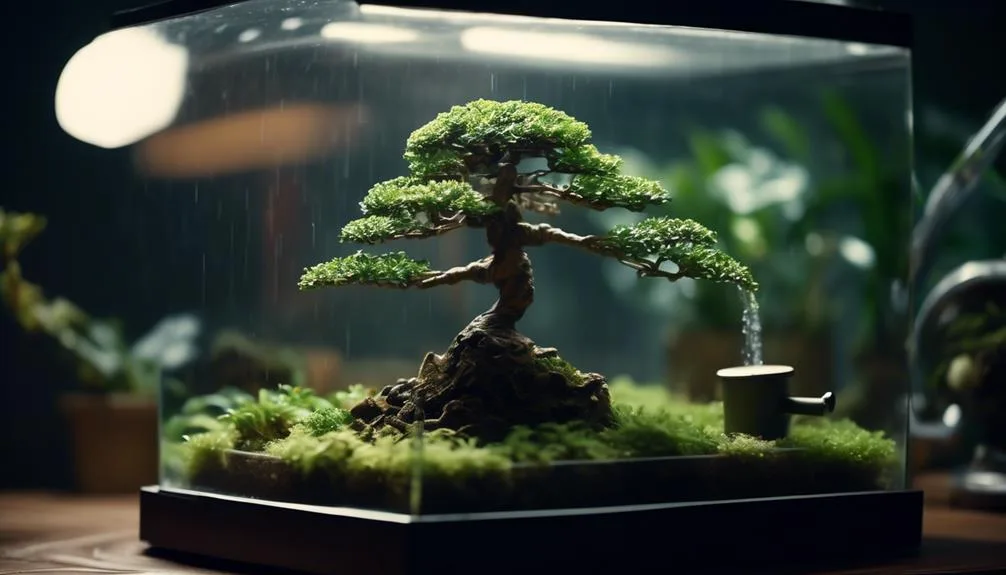
Several innovative tools have emerged to help manage humidity levels and ensure the health of indoor bonsai trees. These tools range from basic items like a tray filled with water placed under the Bonsai pot to advanced technology like digital hygrometers and humidity sensors.
One crucial tool is a humidity tray. The Bonsai pot sits in the tray, and as the water evaporates, it creates a moist microclimate around the tree. This is especially beneficial for tropical trees that require high humidity.
Hygrometers provide accurate data on humidity levels, helping to tailor the specific care each tree species requires. Smart irrigation systems also offer step by step care by automating watering cycles, ensuring the tree gets the water it needs, every time.
For a clear understanding, below is a table summarizing these tools:
| Tool | Use | Ideal for |
|---|---|---|
| Tray filled with water | Increases humidity | Tropical trees |
| Hygrometer | Monitors humidity | All tree species |
| Smart Irrigation system | Automates watering | Specific tree needs |
Frequently Asked Questions
What Does a Humidity Tray Do for Bonsai?
A humidity tray elevates humidity levels around a bonsai, benefiting its health. Tray positioning, indoors or outdoors, and materials can vary. Watering routines and seasonal adjustments should align with bonsai species. Tray alternatives may be used.
Should I Mist My Bonsai Every Day?
Daily misting can benefit bonsai health but over-misting risks soil saturation. Ideal misting time and frequency depend on species and environment. Indoor misting considerations and proper misting techniques help optimize benefits while mitigating outdoor misting challenges.
Do Bonsai Trees Like Moisture?
Bonsai trees indeed favor moisture. Moisture regulation is crucial for their growth. Bonsai watering frequency should account for soil moisture, avoiding overwatering and underwatering. Indoor humidity can help prevent moisture-related diseases in bonsai trees.
